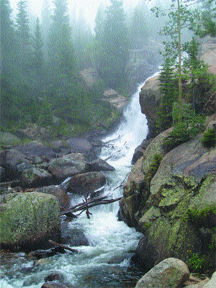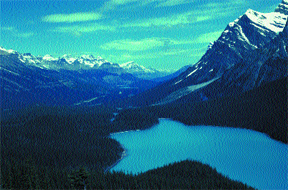Every month, we'd like to feature one of your photos from anywhere in the world and invite other readers to guess where it was taken. Look every month in the print Geotimes for a new photo. Following are clues, answers and winners from past issues.


| Do you have slides and photos you've
collected from field work or vacations? Every month, we'd like to feature one of your photos from anywhere in the world and invite other readers to guess where it was taken. Look every month in the print Geotimes for a new photo. Following are clues, answers and winners from past issues. |
 |
| Send answers for the January 2005 Where on Earth?
contest, which appears in the print magazine, to Geotimes by January
28 (or postmarked by this date). From those answers, Geotimes staff
will draw the names of 10 people who will win Where on Earth? T-shirts.
And from those 10 names, we will draw the names of two people who will win
a Brunton compass.
Click here
to submit a guess for this month's Where on Earth?
contest. Submit
photos for Where on Earth? |

|
Clues: 1. The area surrounding this 25-foot-high waterfall has undergone multiple mountain-building events. The falls erode the granite that intruded into this national park’s predominately metamorphic (slate, schist and gneiss) mountain range following the first building event. 2. During the Cretaceous and Jurassic, dinosaurs roamed this area, which was then a balmy tropical wetland. During the last several ice ages, glaciers filled the mountain valleys, leaving behind a creek flowing into these provincially named falls. 3. Weather changes frequently in the park. Sunny summer mornings often give way to fierce afternoon thunderstorms. This picture was taken in August. That afternoon, a snowstorm struck high on a nearby peak popular with hikers.
Name the feature and location. Scroll down for the answer |
| Answer: Check back later this month for the answer and the winners of the December Where on Earth? |

|
Clues: 1.This natural lake lies within one of the oldest national parks in the
world. The town that shares the same name as the park sprung up after
discovery of nearby hot springs. 3. The area’s annual temperatures range from 30 degrees Celsius
in the summer to negative 30 degrees Celsius in the winter. Name this lake and its location. Scroll down for the answer |
| Answer: Peyto Lake is in Banff National Park, which is Canada's oldest national park and is bounded on the west by several hundred miles of the Continental Divide. An argument over the ownership of nearby hot springs led to the protection and development of Banff National Park in the late 1880s. Photo courtesy of Edith Chasen. |
November 2004 Winners
1. Bob Fleischer (Schenectady, N.Y.)
2. Ken Fulton (Aberdeen, Ohio)
3. Kenneth Markwell (St. Joseph, Mo.)
4. Nancy Piltch (Olmsted Falls, Ohio)
5. John Reid (Fort Collins, Colo.)
6. Andy Ritter (Williams, Ind.)
7. Norman Smith (Lincoln, Neb.)
8. Brad Stevenson (Oak Ridge, Tenn.)
9. Catherine Webster (Pryor, Okla.)
10. Jeff Wilson (Santa Monica, Calif.)
 |
Geotimes Home | AGI Home | Information Services | Geoscience Education | Public Policy | Programs | Publications | Careers |